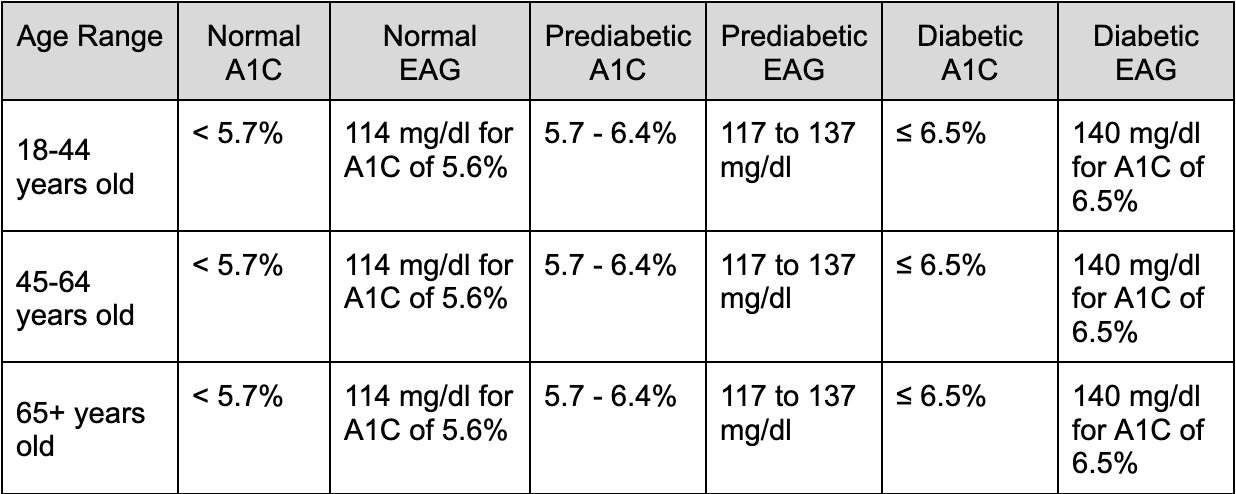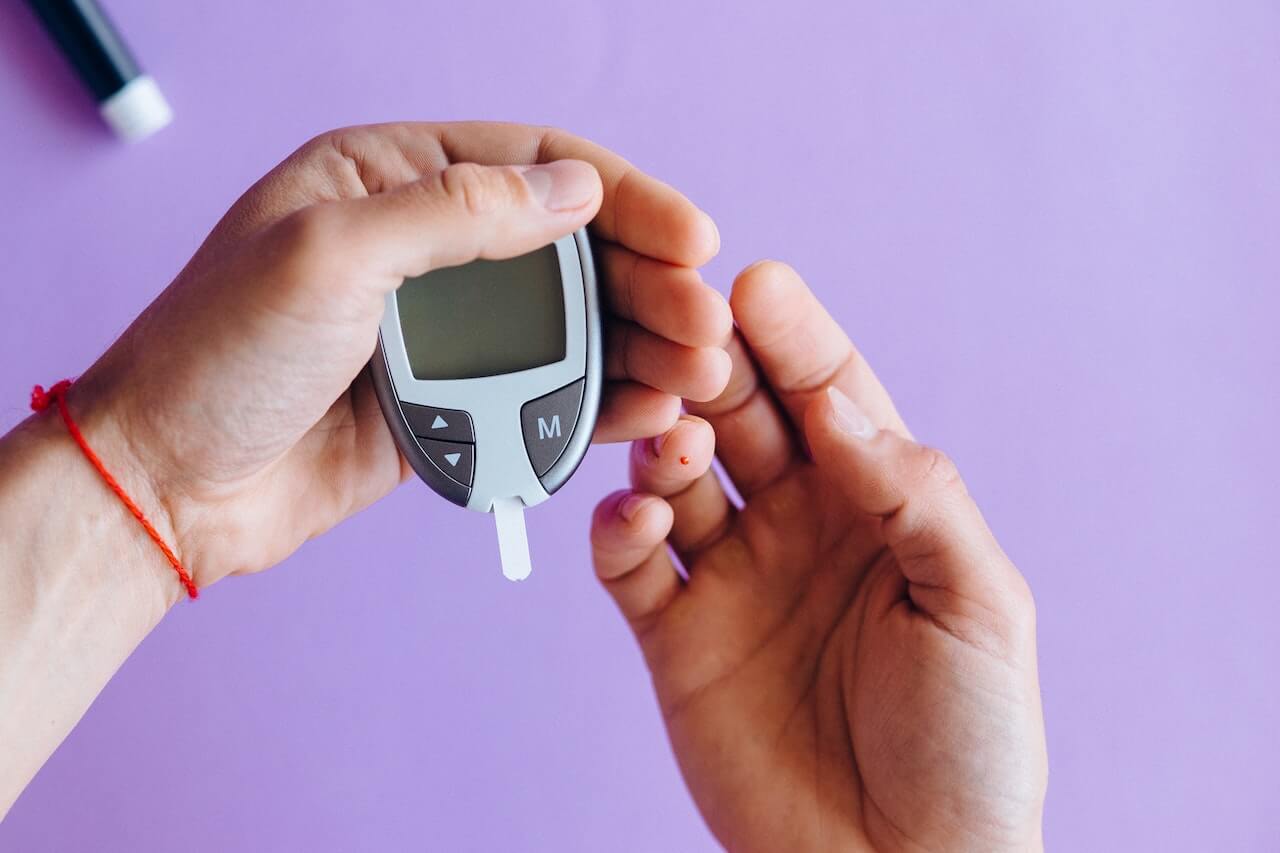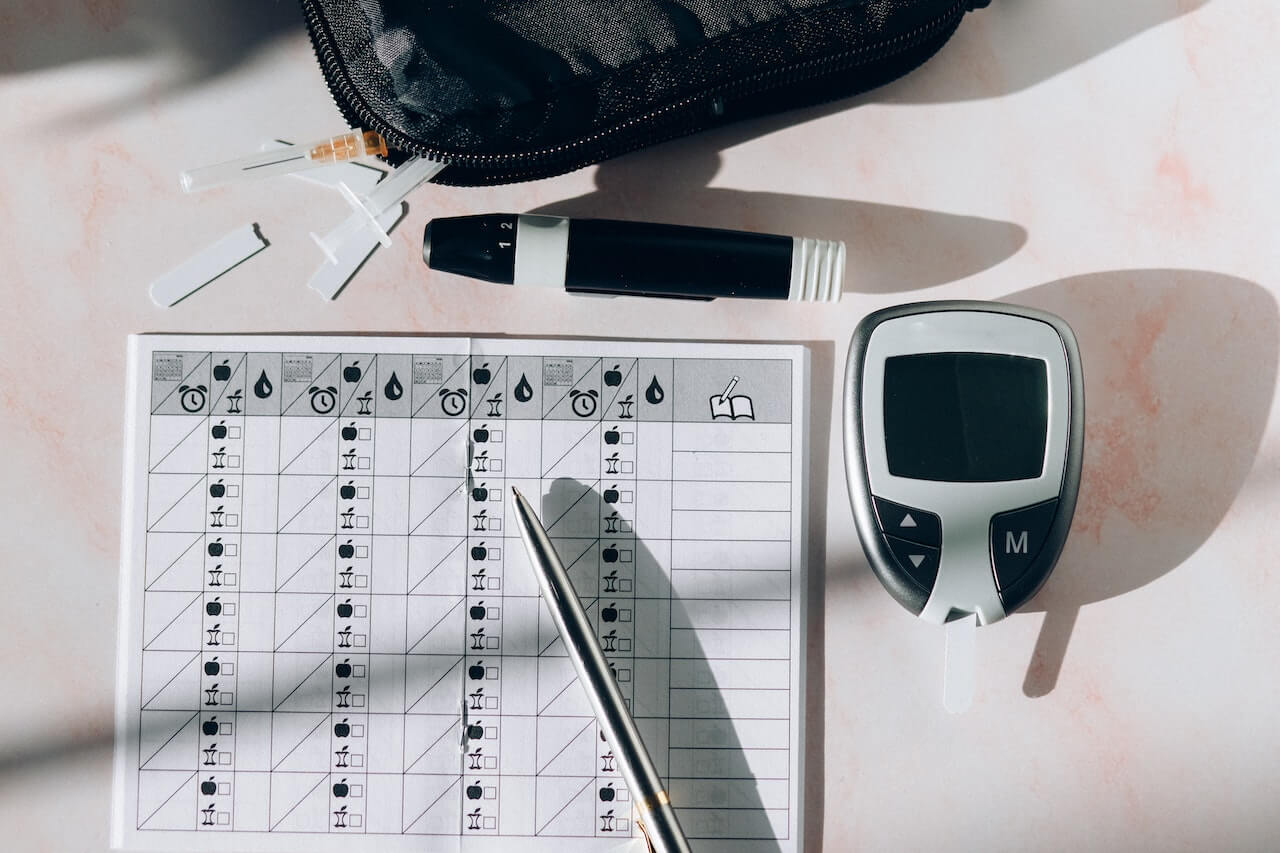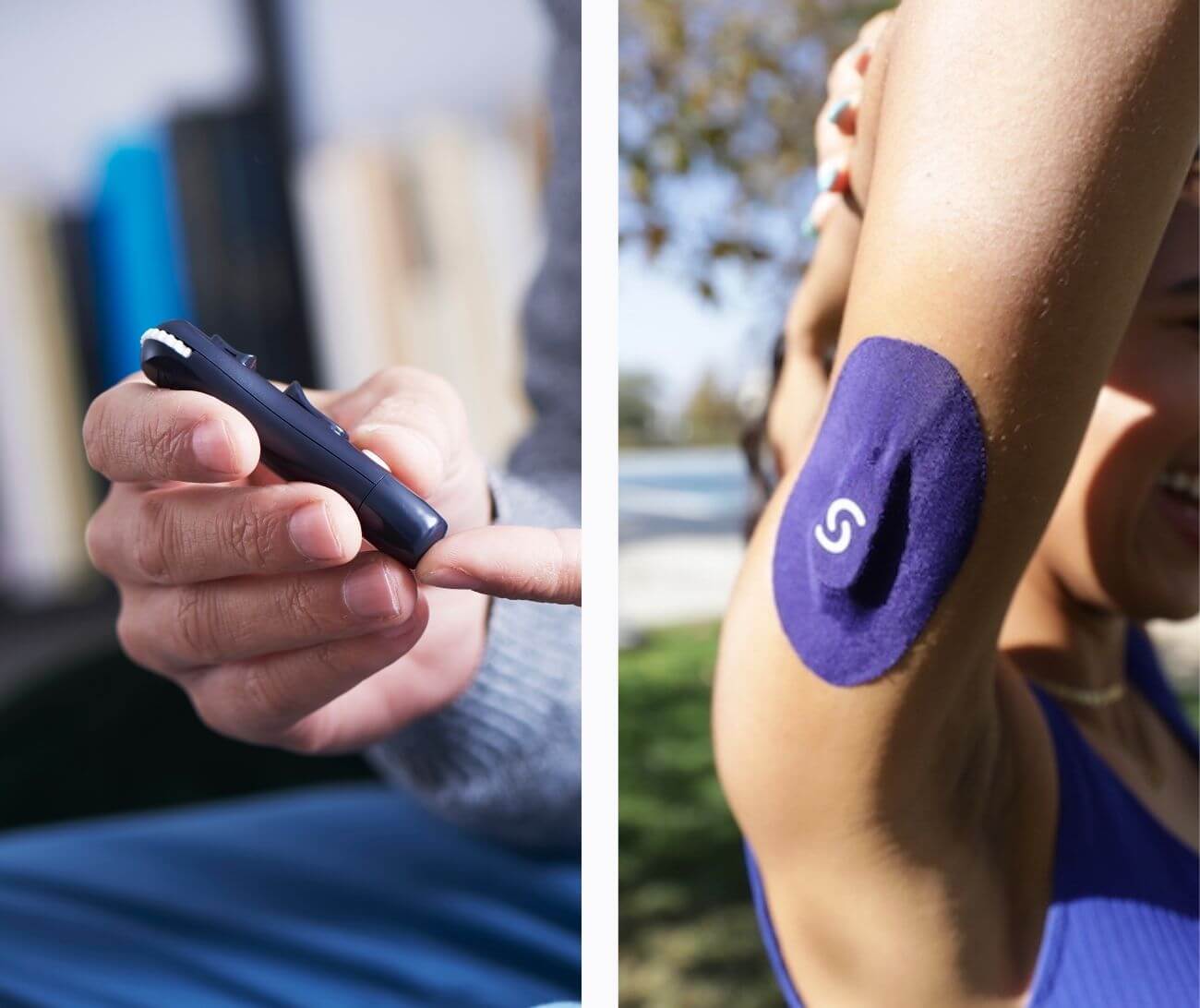Blood sugar, or blood glucose, is the primary source of fuel for your body, keeping you energized through work meetings, workouts, and everything in between. Every time you eat, your body breaks down the carbohydrates consumed into glucose, a type of sugar. This glucose then enters the bloodstream, where it travels to every part of the body, delivering much-needed energy to your cells.
Your body is extremely good at maintaining homeostasis, and blood sugar levels are no exception. Your body works hard to keep blood glucose within a specific range. Too low, and you might feel shaky and fatigued. Too high, and it can wreak havoc on your health, leading to complications like type 2 diabetes. Understanding what it means to have normal blood sugar is important for your health and well-being.
Why Do Blood Sugar Levels Matter?

While maintaining healthy blood sugar levels is important for everyone, it’s an even bigger deal for people living with diabetes. For people living with prediabetes or diabetes, glucose management isn't just about having energy and feeling good; it's about preventing potentially serious health complications.
High blood sugar is a slow and silent intruder that gradually damages the body’s organs and systems if uncontrolled. Consistently high blood sugar levels can cause an increased risk of health problems like cardiovascular disease, heart attack, nerve damage, kidney problems, and vision issues. The good news is that actively managing blood glucose levels can greatly reduce these risks.
Normal blood sugar levels can vary depending on age, lifestyle, and health conditions. For instance, what might be considered normal for a young adult with an active lifestyle could be slightly different for an older individual or someone managing other health conditions.
Normal Blood Sugar Levels Chart by Age
While it's not always possible to pinpoint an exact glucose range or value that applies to everyone, the American Diabetes Association (ADA) has general guidelines that can help us. It's important to remember that individual circumstances can play a significant role in determining what's considered normal for each person.
Normal Blood Sugar Levels Chart for Adults
It is normal for blood sugar levels in adults with and without diabetes to fluctuate throughout the day. Generally, the average normal fasting blood sugar level for non-diabetic adults is typically between 70 to 99 mg/dL (milligrams per deciliter). The target range for fasting blood glucose for adults with diabetes is between 80 to 130 mg/dl.1
Blood sugar levels can be influenced by several factors that may cause temporary fluctuations. Diet and carbohydrate intake, physical activity, stress levels, medications, and other health conditions can affect blood glucose levels.

Normal Blood Sugar Levels Chart for People Aged 65+
Older adults tend to have higher blood glucose and insulin levels than younger people. These higher glucose and insulin values may indicate that your body cannot utilize glucose for energy efficiently.
Glycemic goals for some older adults may be relaxed as part of individualized care. Still, hypoglycemia and hyperglycemia, which can lead to symptoms or risk of acute hyperglycemia complications, should be avoided in all people with diabetes.
Older adults who are expected to live long enough to experience the benefits of more stringent blood sugar control may set blood glucose goals similar to those for younger adults living with diabetes.

Normal Blood Sugar Levels Chart for Teenagers
Limited research is available regarding normal blood sugar levels in teenagers. Normal ranges are based on expert opinion, empirical evidence, and research in adults.
While there are general ranges that are recognized as normal, it is normal for blood glucose to fluctuate during the day in both teenagers who have diabetes and those who don’t.
Ideally, normal blood glucose levels remain between 80-180 mg/dl during the day.3

Normal Blood Sugar Levels Chart for Children
Similar to adolescents, there is limited research on blood sugar levels in children.3
Type 1 diabetes is the most common form of diabetes in youth. Typically, there is no reason to check a child’s blood sugar throughout the day unless they live with type 1 diabetes. However, it can still be good to know what is considered normal.
For children living with or without diabetes, blood glucose levels shift frequently throughout the day based on their activity levels and what they eat.
Recommendations suggest that ideal blood glucose levels should stay between 80-180 mg/dL throughout the day.3

Normal Blood Sugar Levels Chart During Pregnancy Chart
Up to 10% of pregnancies in the U.S. are affected by gestational diabetes every year.4
Risk factors for gestational diabetes include being overweight or obese, physical inactivity, a family history of diabetes, or being over the age of 25.
Having gestational diabetes doesn’t mean that you lived with diabetes before conceiving your child, or that you will continue to live with diabetes after you give birth.
The goal of treatment for gestational diabetes is to maintain normal blood sugar levels. Treatment may also include regular physical activity and special meal plans.4
According to the CDC, unmanaged blood sugar may cause complications during pregnancy and childbirth, including preeclampsia (gestational high blood pressure), macrosomia (growth beyond 9 lb 15 oz), and stillbirth.5
The chart below shows normal blood sugar level goals during pregnancy:

What Do A1C Levels Mean?
The A1C test, also known as the hemoglobin A1C or HbA1c test, provides valuable insights into average blood sugar levels over three months. Understanding what A1C levels represent and how they correlate to blood sugar can allow for better glycemic control.
A1C levels are expressed as a percentage and represent the amount of glucose bound to hemoglobin in red blood cells. Hemoglobin is a protein responsible for carrying oxygen throughout the body. As blood sugar levels rise, more glucose binds to hemoglobin, resulting in higher A1C levels.
Healthcare professionals use an A1C test to gauge an individual's average blood sugar control over time. This can diagnose prediabetes and diabetes or assess how well blood sugar is managed in someone living with diabetes.
EAG, or Estimated Average Glucose, is a term used to estimate the average blood sugar levels based on an A1C measurement. While A1C provides a percentage representing the amount of glucose attached to hemoglobin in red blood cells over approximately three months, EAG provides an average glucose level in milligrams per deciliter (mg/dL).
The following chart outlines the ranges for A1C levels and the estimated average glucose (EAG) values based on age:

These guideline ranges may vary slightly depending on the healthcare organization. It's important to work closely with your healthcare team to determine your target A1C levels based on your individual health conditions and circumstances.
What Do Your Fasting Blood Sugar Levels Tell You?
Your fasting blood sugar levels provide important information about how well your body responds to glucose. Fasting blood sugar may also help to diagnose prediabetes or diabetes.
Certain blood sugar values are related to serious health risks. Here are the different degrees of risk associated with fasting blood sugar levels and what you should do for them:
Dangerously Low (< 50 mg/dl)
Fasting blood sugar levels that are dangerously low, typically below 50 mg/dL, can indicate hypoglycemia or low blood sugar. If you experience dizziness, confusion, sweating, or fainting symptoms, it's important to act immediately. Consume a fast-acting carbohydrate source like fruit juice, glucose tablets, or a sugary snack to raise blood sugar levels. If symptoms persist or recur, seek immediate medical attention.
Low (< 70 mg/dl)
Fasting blood sugar levels below the normal range, typically below 70 mg/dL, indicate mild hypoglycemia. If you experience shakiness, weakness, irritability, or hunger, consume a small carbohydrate-containing snack or beverage to raise your blood sugar levels. Follow up with a balanced meal to maintain stable glucose levels. If you frequently experience low blood sugar or have concerns, consult a healthcare professional for further evaluation and management strategies.
Normal (70-99 mg/dl)
Fasting blood sugar levels within the normal range, typically between 70-99 mg/dL, indicate good glucose control. This range is considered healthy and signifies a healthy metabolism. To maintain normal blood sugar levels, eating a balanced diet, engaging in regular physical activity, and practicing healthy lifestyle habits is important.
High (> 100 mg/dl)
Fasting blood sugar levels above the normal range, typically above 100 mg/dL, may indicate prediabetes or diabetes. Elevated fasting blood sugar levels can be a sign of impaired glucose metabolism. If your fasting blood sugar is consistently high, you should consider lifestyle modifications like changing your diet, increasing physical activity, and managing stress levels.
Extremely High (> 126 mg/dl)
Fasting blood sugar levels that are extremely high, typically above 126 mg/dL, may indicate uncontrolled diabetes. It's important to seek immediate medical attention if you experience excessive thirst, frequent urination, unexplained weight loss, or persistent fatigue.
These guidelines provide a general framework, and individual circumstances may vary. Regular monitoring of blood sugar levels, adherence to a healthy lifestyle, and open communication with your healthcare provider are essential for maintaining optimal glucose control and overall well-being.
How to Monitor Blood Sugar Levels

Blood sugar monitoring is a useful tool for both people with diabetes and without.
For people without diabetes, glucose monitoring can help optimize metabolism and energy levels, promote weight loss, and provide insight into how the body responds to sleep and stress.
For people living with type 1 diabetes or type 2 diabetes, it is an essential part of managing diabetes and promoting overall health.
Here is an overview of the different ways you can monitor your blood sugar levels at home:
Self-Monitoring of Blood Glucose (SMBG)
Self-monitoring of blood glucose involves using a blood glucose meter to check your blood sugar levels. This method requires a fingerstick to obtain a small blood sample, which is then applied to a test strip inserted into the glucose meter.
Continuous Glucose Monitoring (CGM)
Continuous Glucose Monitoring provides real-time glucose readings throughout the day and night. It involves wearing a small sensor, usually inserted under the skin, which measures glucose levels in the interstitial fluid. The sensor transmits data to a receiver or smartphone app, allowing you to monitor your glucose levels continuously.
Flash Glucose Monitoring (FGM)
Flash Glucose Monitoring is a method that also provides glucose readings without the need for fingersticks. It uses a small sensor worn on the back of the upper arm to measure interstitial glucose levels.
Different monitoring methods have varying levels of accuracy and provide different insights into glucose control. Consult your medical provider to determine the most suitable method for your needs.
Frequently Asked Questions
What are dangerous blood sugar levels?
It can be dangerous when blood sugar levels are too high or too low. When blood sugar levels fall below 50 mg/dl, this is considered dangerously low. When blood sugars are above 300 mg/dl, this is considered dangerously high.
What are the symptoms of a low blood sugar level?
Symptoms of low blood sugar (hypoglycemia) include
- Rapid heart rate
- Shaking
- Sweating
- Nervousness or anxiety
- Irritability or confusion
- Dizziness
- Hunger
What should your blood sugar be all day?
Normal glucose levels should remain between 70-120 mg/dl for approximately 90% of the day and rarely go above 140 mg/dl or below 60 mg/dl. Your 24-hour average glucose level should be around 89-104 mg/dl.
What is good morning blood sugar?
Before eating anything, a normal morning blood sugar level should be between 70-100 mg/dl.
Learn More About Healthy Blood Sugar Levels with Signos’ Expert Advice
Signos is a great resource for expert advice on nutrition and healthy eating. Signos has a team of registered dietitians who compile evidence-based nutrition information to help you improve your health and wellness. Check out the resources here.
Signos CGM empowers you to improve your health by keeping track of your diet, exercise, sleep habits, and blood sugar. Knowledge is power, and a CGM can give you specific information about how your habits affect your health.
Find out if Signos is a good fit for you by taking a quick quiz.
<p class="pro-tip"><strong>Learn More: </strong><a href="what-factors-affect-blood-sugar">What Factors Affect Blood Sugar Levels?</a>.</p>
- Item 1
- Item 2
- item 3
Topics discussed in this article:
References
- Nuha A. ElSayed, Grazia Aleppo, Vanita R. Aroda, Raveendhara R. Bannuru, Florence M. Brown, Dennis Bruemmer, Billy S. Collins, Marisa E. Hilliard, Diana Isaacs, Eric L. Johnson, Scott Kahan, Kamlesh Khunti, Jose Leon, Sarah K. Lyons, Mary Lou Perry, Priya Prahalad, Richard E. Pratley, Jane Jeffrie Seley, Robert C. Stanton, Robert A. Gabbay; on behalf of the American Diabetes Association, 6. Glycemic Targets: Standards of Care in Diabetes—2023. Diabetes Care 1 January 2023; 46 (Supplement_1): S97–S110. https://doi.org/10.2337/dc23-S006
- Nuha A. ElSayed, Grazia Aleppo, Vanita R. Aroda, Raveendhara R. Bannuru, Florence M. Brown, Dennis Bruemmer, Billy S. Collins, Marisa E. Hilliard, Diana Isaacs, Eric L. Johnson, Scott Kahan, Kamlesh Khunti, Jose Leon, Sarah K. Lyons, Mary Lou Perry, Priya Prahalad, Richard E. Pratley, Jane Jeffrie Seley, Robert C. Stanton, Robert A. Gabbay; on behalf of the American Diabetes Association, 13. Older Adults: Standards of Care in Diabetes—2023. Diabetes Care 1 January 2023; 46 (Supplement_1): S216–S229. https://doi.org/10.2337/dc23-S013
- Nuha A. ElSayed, Grazia Aleppo, Vanita R. Aroda, Raveendhara R. Bannuru, Florence M. Brown, Dennis Bruemmer, Billy S. Collins, Marisa E. Hilliard, Diana Isaacs, Eric L. Johnson, Scott Kahan, Kamlesh Khunti, Jose Leon, Sarah K. Lyons, Mary Lou Perry, Priya Prahalad, Richard E. Pratley, Jane Jeffrie Seley, Robert C. Stanton, Robert A. Gabbay; on behalf of the American Diabetes Association, 14. Children and Adolescents: Standards of Care in Diabetes—2023. Diabetes Care 1 January 2023; 46 (Supplement_1): S230–S253. https://doi.org/10.2337/dc23-S014
- Gestational Diabetes | CDC. (2022, December 30). Centers for Disease Control and Prevention. Retrieved June 16, 2023, from https://www.cdc.gov/diabetes/basics/gestational.html
- Gestational Diabetes and Pregnancy | CDC. (2022, July 14). Centers for Disease Control and Prevention. Retrieved June 16, 2023, from https://www.cdc.gov/pregnancy/diabetes-gestational.html
































